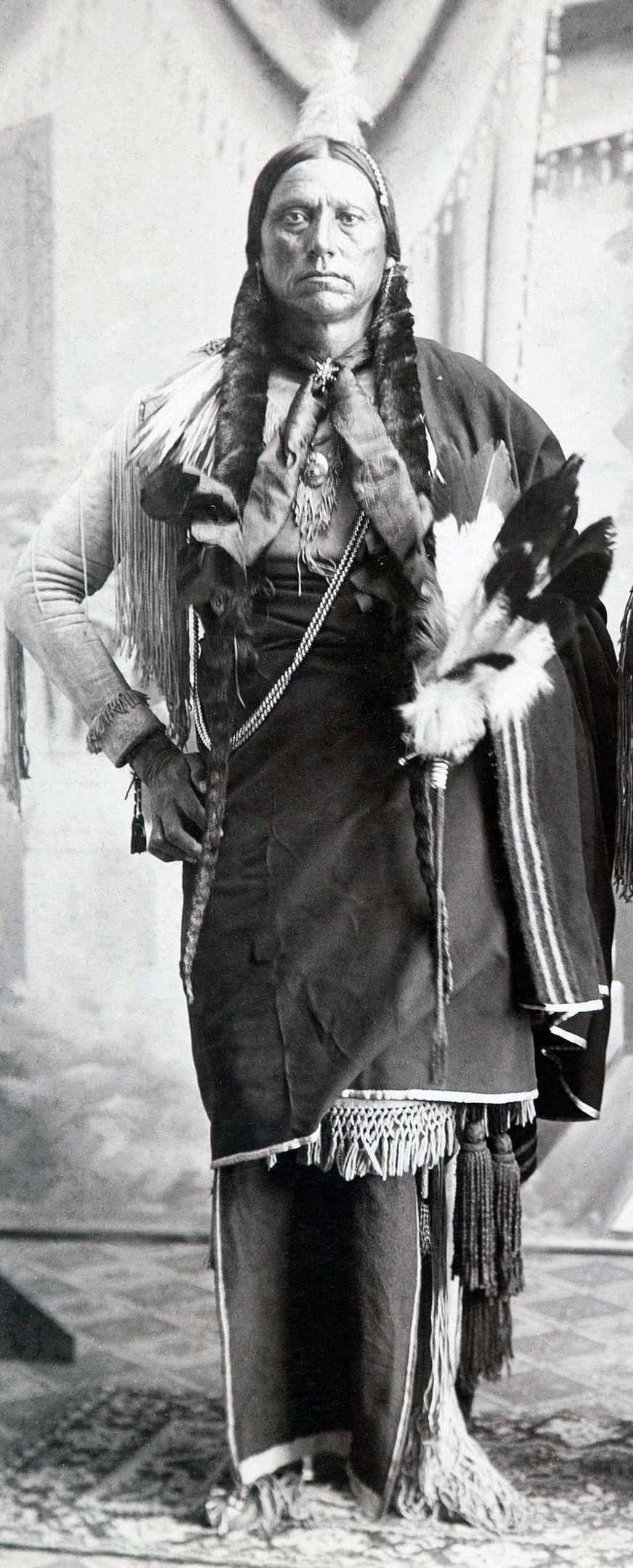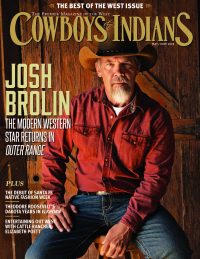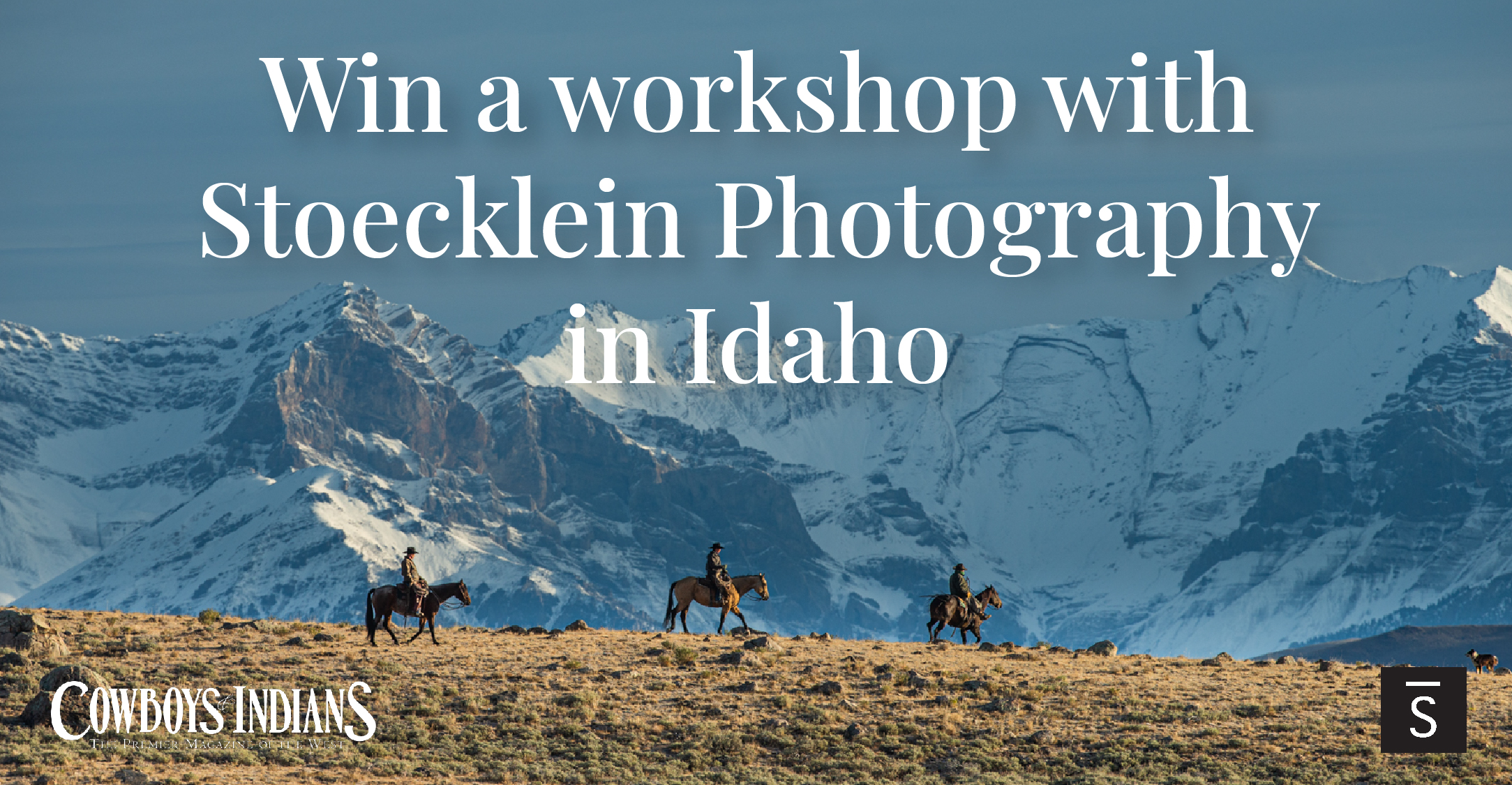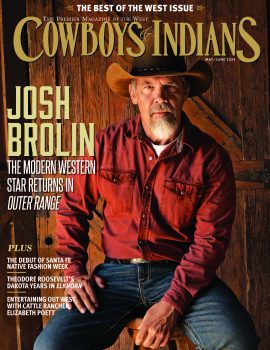In a dusty Panhandle camp near Canyon, Texas, Plains Indians and white combatants clashed in two historically crucial battles, separated by a decade, at the same site.
Today, it’s mostly parcels of sectioned-off ranch land, set apart from other dusty Texas Panhandle acreage by only a few historical plaques and a medium-size bluff. But peering at a cluster of cottonwoods lining a narrow nearby creek, it’s easy to imagine the scene there just at daybreak on June 27, 1874, when hundreds of Comanche, Cheyenne, and Kiowa warriors eased their mounts from behind the trees and prepared to attack a hunting camp known as Adobe Walls. Only 28 men and a woman (all white — she was the wife of one of the men) were currently in the camp. Besides outnumbering their enemies by at least 10-to-1, perhaps as much as 20- or even 30-to-1 (the number of Indian assailants has never been determined), Comanche mystic Isa-tai promised an additional advantage: His magic would ensure that all the whites would still be sleeping when the pre-dawn assault took place, assuring easy victory.
But some in the camp were awake, and the subsequent Battle of Adobe Walls was so extraordinary — from the legendary frontier figures who fought in it to the miracle shot that essentially marked its conclusion — that it’s easy to forget it was the second time vastly outnumbered whites faced a determined tribal coalition in the same rugged vicinity.
The original intent of Adobe Walls and its later iteration was commerce, not combat. In the mid-1840s, a trading firm built an outpost in isolated Hutchinson County just below the Canadian River. The original building was made of logs, but it was soon replaced by a better, broader structure of adobe bricks, which provided the camp’s name. Hunters and trappers passed through, and pioneers headed farther west. But Indians who considered the region their homeland made periodic raids. Peril trumped profit, and by 1849 proprietor William Bent had had enough. He closed down his operation and moved on. The adobe walls of the abandoned post soon tumbled, and scattered stacks of bricks were the only evidence that the trading post had ever existed. Few remembered it until November 1864.
During the Civil War, the U.S. Army recalled many troops from the frontier to fight for the Union cause. Other officers and enlisted men resigned to join the Confederacy. As a result, Indians in the Southwest and Great Plains found it easier to attack white settlements and wagon trains. In particular, the Comanche and Kiowa seemed to strike at will in New Mexico and Texas. The commander of the U.S. military district in New Mexico decided to gather his depleted forces and send them out to find and punish the main Indian bands. He chose Kit Carson, who had considerable experience as a trader, scout, and fighter, to lead the expedition. Carson set out in early November at the head of about 350 combined infantry and cavalry accompanied by some 70 Ute and Apache scouts. Although the territory he intended to explore was rugged, crisscrossed with craggy outcrops and rivers, Carson also took two howitzers. Hauling them along would slow the column considerably, but he felt the added firepower more than compensated.
It was hard going for Carson and his troops. They were plagued with bad weather but finally found signs of nearby Indian camps a short distance from the old Adobe Walls trading post. On November 25, Carson attacked a Kiowa camp, routing its occupants. But his triumph was short-lived. There were other camps nearby, Comanche as well as Kiowa, and the Indians joined forces. Soon Carson was in frantic retreat, with as many as 1,000 warriors in pursuit. At Adobe Walls, taking scant cover in the ruins, Carson and his men turned to fight — only to find that even more Indians were pouring into the battle. There was great confusion, much of it spurred by crafty strategy from the Indians. In combat, the Army often used bugle calls to provide direction. But Kiowa chief Satanta had his own bugle, and its well-timed, if incomprehensible, blats left many soldiers wondering what they were supposed to do.
With the outcome of the fight in the balance, Carson brought the howitzers into play. Their shells crashed among the Indians, who panicked and retreated. The Indians weren’t gone for long. As the day progressed, they launched a series of attacks that were repeatedly thwarted by the howitzers. But a stalemate favored the Indians. Eventually, the supply of howitzer shells was almost completely exhausted. Carson ordered a controlled retreat. The Indians responded by setting brush fires, trying to use the flames to drive the soldiers into the open. But Carson was a veteran of Great Plains battles and set counter fires that negated those of the Indians. As night fell, the whites fell back to high ground. They connected with a supply train that had originally been left behind, so there was access to food, water, and ammunition. The Indians followed, but stayed warily at a distance, safely beyond howitzer range. All day on the 26th, each side watched the other, and on the 27th Carson withdrew his troops completely.
The Indians believed they’d won — the white soldiers had fled. But the Army also claimed a victory of sorts. Carson had proven outnumbered troops could be safely extricated from a frontier battle with Indians. The lesson that superior firepower could batter even the fierce Comanche to a standstill wasn’t lost, either.
Shortly after the conclusion of the Civil War, the 1867 Medicine Lodge Treaty between the U.S. government and some (though not all) of the leaders of the Comanche, Kiowa, Arapaho, and Cheyenne allocated hunting rights south of the Arkansas River to the Indians. The tribes gave up much of their land and were to live on reservations. Many Indians did not do so. Those who submitted subsequently depended on government agents to provide them with food and other necessities. This obligation was often neglected. Equally forgotten was the agreement about who could hunt where. Small parties and individual white hunters frequently ignored the river boundary, feeling it was their natural right to hunt where they pleased. Hard feelings abounded, and the Army sometimes had to intercede. But in the early 1870s, most of the troops in the area were ordered down to the United States-Mexico border to control fighting and depredations there. The area above and below the Canadian River was virtually unguarded.
The Comanche, Kiowa, and Cheyenne of the Great Plains suffered because of hunting encroachment. Whites killed available game, and during winter months many Indians went hungry, both on and off the reservations. Government treaty promises, from protected hunting areas to reservation supplies, clearly meant nothing. In earlier times, the tribes had joined together to briefly overwhelm white interlopers. It was time for another attack, and this one must exceed any that had gone before — an organized, calculatedly terrible assault on some bastion that would so horrify other whites that they’d abandon the region forever. Many fighting men left reservations to participate. War chiefs were abetted in recruitment by Isa-tai, a pudgy Comanche claiming magical powers bestowed on him by spirits. Isa-tai claimed he could make warriors impervious to bullets, which would pass right through their bodies without harm. The Indians’ habitual lack of ammunition wouldn’t be a problem, either. Isa-tai would belch up all the bullets required. It was only a matter of finding just the right group of whites to obliterate. A town, perhaps, or an Army fort — and then the perfect target was chosen, in a place fondly remembered by the Indians for a previous great triumph.
There were still considerable numbers of buffalo below the Arkansas in territory allocated to the Indians, enough animals so the white hunters might enjoy another few years of shooting and profit before eradicating the massive southern herd, too. Indians were a problem for individual and small groups of hunters defying the current treaty, but there was surely safety in large numbers. In late spring 1874, some Dodge City, Kansas, entrepreneurs and crack-shot buffalo hunters banded together and, after determining the Army would turn a blind eye, traveled south into the Texas Panhandle to establish a hunting camp. Among them were Billy Dixon, one of the best shots in Dodge, and young William Barclay “Bat” Masterson, a fledgling hunter. The site they chose was about a mile from the original Adobe Walls site, and they adopted the old name for their new outpost. Soon, the huge Southern herd came past in its annual migration. The hunters began their gory, highly profitable work, paying attention to buffalo, not Indians.
There were warning signs. About 100 hunters were in the area, many in small camps some distance from Adobe Walls. Hostiles overran two of these, leaving dismembered corpses in their wake. But the merchants and hunters living in or near Adobe Walls believed that the outpost, with its small collection of thick-walled sod buildings and sharpshooter inhabitants, was impervious to potential attack. Everyone knew that Plains Indians traditionally fought in small, roving bands. They could never summon the collective firepower to take the camp.

But on the morning of June 27, the large, integrated tribal force led by Comanche Quanah Parker was determined to do just that. They formed a spectacular battle line and charged, confident that their enemies were all asleep as Isa-tai had promised. But some of the hunters had been up all night — according to some accounts, a critical ridgepole supporting the dirt roof of one building cracked and had to be repaired. They saw the Indian horde (Billy Dixon called it a “splendidly barbaric sight”) and sounded an alarm. Two freight men, sleeping outdoors in their wagon, were caught in the open and butchered. The rest of the whites managed to barricade themselves inside as the warriors descended.
The initial fight was brutal and at close quarters. The Indians tried to break in through doors and windows, and they climbed up on the dirt roofs and fired down through them. The powerful rifles of the buffalo hunters were useless at such short range. They shot back with pistols and Winchesters. After the initial assault the Indians briefly fell back, then attacked again. The Indians suffered some losses. Amazingly, none of the defending whites inside the buildings were seriously hurt.
As the morning progressed, the Indians attempted different strategies, creeping up in the high grass rather than making all-out attacks. One defender died. The rest kept up a steady fire, and when the Indians pulled back again, hunters using powerful Sharps rifles began picking them off at long range, several hundred yards at least. The Indians confronted Isa-tai, who had promised the whites’ bullets could not harm them. Now he could not even vomit up bullets, and the attackers’ supply of ammunition was running low. After a few more futile attacks — Quanah was wounded in one, badly enough to remove him from the fighting — the Indians decided to lay siege to Adobe Walls instead. They still held numerical advantage over the whites. They withdrew, some stationing themselves at the best vantage point imaginable. It was the top of a bluff easily three-quarters of a mile down the valley from the Adobe Walls camp, far out of accepted rifle range, even for the mighty Sharps. From there, the Indians could see everything, which, at the end of this first day, included the whites cautiously emerging, dealing with their dead but staying close to the buildings.
The siege continued. The Indians didn’t leave, and the whites couldn’t escape. But eventually Dixon, sensing the right wind conditions, aimed his Sharps up at the bluff and pulled the trigger. If no one later could agree on the distance involved — estimates range from 1,000 yards to about a mile — there’s no dispute regarding the results. An Indian toppled. Dixon, a modest man, described it as a lucky shot. It was enough to discourage the Indians. They rode away, and the tribal alliance dissolved, though small bands took immediate vengeance on scattered white settlers. The survivors of Adobe Walls were soon reinforced by other hunters, and those who wished were evacuated back to Dodge City.
As a result of the Second Battle of Adobe Walls, the U.S. Army became determined to eliminate the Indian threat in the region for good. Renegades were thoroughly routed in the resulting Red River War. Even Quanah brought his followers onto an agency. Dixon joined the army as a scout and won a Medal of Honor for bravery in the conflict. Masterson went on to multiple careers as a gambler, lawman, and, later, as a journalist whose frontier tales imbued readers with pride in, and fascination with, the history of the American West. Many of these stories contained considerable exaggeration — Masterson himself was fond of acquiring old guns from pawnshops and selling them to gullible fans as weapons he used in helping to tame the Wild West. But the story of the battles at Adobe Walls needed no embellishment, then or ever.
A visit to Adobe Walls is fascinating. Thanks to the historical plaques and the terrain itself, it’s easy to picture the flow of the second battle there. But reaching the site requires the willingness for rough-and-tumble driving. Take Texas State Highway 207 north of Borger and Stinnett, then turn east at the appropriate highway marker. After following narrow blacktop and dirt roads for another 15 or 16 twisting, dusty miles, you’ll be there. On the way home, stop in the town of Canyon to visit the remarkable Panhandle-Plains Historical Museum, which has an excellent display of Adobe Walls memorabilia.
Jeff Guinn is the author of 17 books and has reached the New York Times bestseller list in both fiction and nonfiction. His new novel, Buffalo Trail: A Novel of the American West (Putnam, 2015), is about the Second Battle of Adobe Walls. From the January 2016 issue.













